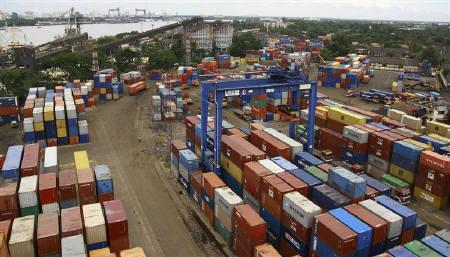Doha Development Round: WTO talks collapse after 7 years of Negotiations
By Eric Acha
 The Doha Trade Negotiation rounds first lunched in 2001 in Doha - Qatar where aimed at paying special attention to the needs and interest of the Developing Countries. The negotiations were planned to redress the perceived imbalances in the global trading system that mostly favoured the rich developed countries
The Doha Trade Negotiation rounds first lunched in 2001 in Doha - Qatar where aimed at paying special attention to the needs and interest of the Developing Countries. The negotiations were planned to redress the perceived imbalances in the global trading system that mostly favoured the rich developed countries
But unfortunately this vision and commitment seem to have kicked the bucket or to a minimum has been strangulated.
Though it may be disputed by some negotiators, it is evidently clear that the interest of the developing countries was no longer the top priorities of the negotiations as they proceeded.
The difficulties to reach an agreement that addresses the concerns and interest of the developing countries as well as hold the potentials to raise their income and living standards, while at the same time offering sufficient incentives for the developed countries has been the major obstacle to the negotiations.As a matter of fact, agriculture and the manufacturing sector has been the point of contention and has led the negotiations a couple times to deadlock, and still are the two main issues of concern today, with agriculture being the most controversial. Before looking at where things stand today, let us take a brief retrospect over what has been going on since the first round Qatar in 2001.
Doha 2001
The Doha round which kicked off in November 2001 was actually a continuation of negotiations from the WTO ministerial conference of 1999 in Seattle (Mellinium round) which failed woefully, since some very fundamental issues had been ignored by the negotiators. It was illusory to dream of a consensus on major issues after excluding the developing countries from agricultural negotiations. This failure led to the birth of the Doha Development Agenda commonly referred to as the Doha Round.
Its agenda was broad and there was little thought on diagnosing how complicated things would be if the objectives of the Agenda had to be met. Fully opening agriculture and manufacturing markets were the main issues on the agenda as
well as trade in services and also expanding intellectual property regulations. In short it was meant to improve the current terms of trade and encourage fair trade.
With so much optimism, the negotiators were convinced things will be concluded within 4 years and hence 2006 was set as the deadline.
Cancún 2003
Two years after the lunch of the Doha rounds, trade ministers met in Cancùn to continue what they started in Doha with yet much optimism and with hopes things were getting close. Little did they know that this round was actually to unveil disparities and realities that would keep them busy and not finding consensus for the next 5 years.
It was at this ministerial meeting that the challenges posed by subsidies and full liberalization of markets really emerged in their totality. Without much wrangling, the negotiations led to a deadlock and subsequently collapsed after four days of negotiating. The sticking point here was a demand by the developing countries that the EU and the US reform their EU Common Agricultural Policy (GAP) and the US government Agro-Subsidies respectively, in order to fully scrap off the agricultural subsidies they were providing their famers. In other words, the negotiations had just begun.
Geneva 2004
A lot is considered to have been achieved during the Geneva Round of August 2004, since a framework agreements was at least achieved. The EU, USA, Japan and Brazil agreed to “reduce” (not eliminate) their export and agricultural subsidies and lower tariff barrier, while on the other hand, the developing countries agreed to “reduce” (not eliminate) tariff on manufactured goods, but at the same time gained the right to protect what they considered key industries from unfair competition.
Paris 2005
The Paris round was originally intended to round up issues discussed in Geneva and prepares a clean path for the negotiations in Hong Kong. But unfortunately issues that the negotiators thought had been vigorously discussed and concluded in Geneva resurfaced and were becoming major obstacles to any progress. French farmers through their lobbyist group protested all previous moves intended to cut farm subsidies, while the US, EU, Australia and Brazil could not agree on issues relating to chicken, beef and rice. With this, there was a feeling of pessimism since it was evidently clear that failing to find a consensus on such small but technical issues will mean harder days ahead when it comes to large political and more risky issues.
Hong Kong 2005
After 3 years of intensive negotiations and midway to the Doha rounds, the trade ministers (negotiators) finally agreed on a deadline for eliminating export subsidies on agricultural products, though without a framework to ensure its implementation. Despite lots of resistance and obstacles, the Hong Kong declaration had some substance in that, it was able to set 2013 as the deadline to eliminate those subsidies on agricultural exports with the industrialized nations opening up their markets to goods from the developing and poor countries.
Geneva 2006
The sticking issue at this meeting in Geneva was the farming subsidies that had been a point of contention during the Paris meeting. The negotiators failed to agree on the demand to reduce farming subsidies and lowering import taxes. It posed so much threat to the entire negotiations so much that, some sceptics where concluding the Doha-Development Agenda was going to collapse. Many thought since the US trade Act of 2002 granted to the President of the United States G.W. Bush was due to expire in 2007, any subsequent Trade deal will need to be approved by the US congress with the possibilities of amendments, an issue which will be at odds with most of the negotiators. This fact alone demotivated most negotiators. The round is some how believed to have been saved by Hong Kong, that acted as a mediator to the collapsed trade liberalization talks.
Potsdam 2007
What actually transpired in Potsdam in 2007 that led to a deadlock is still being disputed by many today. But the truth is that, the discrepancies were nothing new to the negotiators and they all understood that nothing good was going to come out of the conference, since the US, EU, Brazil and India were still unable to find common grounds on a range of issue. What I will term the “old disagreement” which was, and still is, and will continue to be is the call for the full liberalization of the agricultural and industrial market and also the total cancelation of farm subsidies by the US and the EU. These are the sticking issues that led to the break down of the conference. However, the trade ministers left Potsdam with optimism following some consolatory notes from Pascal Lammy, the Derictor General for the World Trade Organization (WTO), hoping things will be easier when the talks resume on July 21st 2008 in Geneva. How I wish they all knew what awaited them.
Geneva 2008
Prior to the kick off the conference on July 21st, there was so much optimism that the negotiations were nearing conclusion and could get done before the year runs out. Even the Director General of WTO showed same optimism on many occasions, despite knowing the complexity. During his intervention at the International Monetary and Financial Committee meeting on 12 April 2008 in Washington, he urged financial leaders to push “now” for the conclusion of the Doha Round. Hear him:
“Last year I told you about the risks of a failure in the Doha Round. A sort of half empty glass. This year I am completely convinced that we have it within our means, politically and technically, to finish the Doha Round this year. To do so, the first step we need is for WTO Member governments to agree at Ministerial level by the end of May on the framework for cutting agricultural tariffs, agricultural subsidies and industrial tariffs.”
Looking closely at how the talks ended in Potsdam in 2007, it will beat the imagination of any good thinking human being why there was so much optimism. I am an optimist but as long as these talks were concern, but I could look straight into any face and say without stuttering that the negotiations will go beyond 2008 if actually the differences needed to be sorted out and the Doha development round Agenda maintained.
The issues at stake are so technical and politically complicated so much that finding a win-win compromise will require many political and economic sacrifices from all parties. But this willingness was lacking despites the fact that the conference took off on a positive node in Geneva.
Even though taking off on a good foot, the negotiations where in a deadlock for four days until a consensus was reached on the extent of farm subsidies reduction within the EU and the US. It was agreed that the EU will cut its farm subsidies by 80% while the US will do same by 70%. France and Italy reluctantly bowed to this proposal but with lots of reservations. The percentages sound really much but the fact is, in reality it is not enough to avoid the distortion these farm subsidies are causing to world prices and the havoc it brings to millions of poor farmers in the developing countries.
On the other hand, it was not possible to fully convince India, China and Brazil to fully accept the terms of opening up their markets to industrial goods from the developed countries. China and India are being accused for being behind the current deadlock.
The nature of these negotiations is so complex that even the developing countries that ought to be speaking with one voice are more often divided than united when their interest is at stake. This was once again proven on Sunday 27th, when the Latin American countries and the EU came out celebrating after settling their long standing dispute over EU imports of Bananas. Until this day the deal had favoured only former European colonies in the African, Caribbean and Pacific (the so called ACP countries) that were exempted from import tariffs on Banana. The ACP cried foul at this move and threaten a total blockade of the negotiations if the agreement was not reversed and overhauled. The fact is, the deal had been stroked and the cries were falling on deaf ears.
The EU had once more outsmarted the ACP member states with this move and at this point, good thinking minds should start questioning the true intensions of the bilateral Economic partnership Agreement the EU signed with most of these ACP member states. One can now have an understanding of why there was so much pressure exerted on the ACP member states by the EU negotiators to sign the Economic partnership Agreement (EPA) at the beginning of this year.
I will attempt making some analysis in my next post on the technical reasons delineating why the Doha Agenda is practical impossible, though if attained will end a lot of mass suffering in most developing countries. But until then, the DOHA ROUND IS DOOMED!



